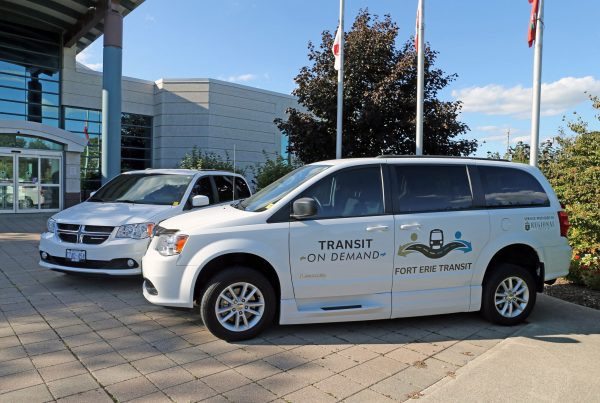On-demand transit systems are becoming increasingly more popular, especially in rural and less-populated areas where it is difficult to maintain fixed route bus service. In these types of areas, it can be a challenge to coordinate ride-sharing with sparse populations spread out over longer distances. As well, it can often be a relatively far distance for riders to reach bus stops in the area. As Pantonium offers software solutions for transportation companies, this is an exciting time to be in the transit business. Pantonium’s software is designed to help transportation companies reach new levels of efficiency. The key for this is how the software of Pantonium enhances ridesharing in the most efficient way, adjusting to the constantly fluctuating demand of riders. Cloud-based connectivity also allows more effective communication than ever before. This means the public receives an increase in service level and convenience while the transportation provider can save on operating costs. Everybody wins.
AngelList, a platform for startups seeking clients and investors, displays a whopping 177 companies on their page for public transportation providers. As well, CityLab has reported further on the growing number of software-based transportation agencies and is tossing around a new name for this type of service: microtransit (we will see if the word makes it into the Webster’s dictionary next year). These companies all have their own vehicle fleets, but they all use fleet management software to optimize their ridesharing abilities. With this in mind, let us take a look at a few different areas of on-demand transit service and how it has affected communities.
The government of Helsinki, Finland has an ambitious plan to make car ownership pointless in the city. The Kutsuplus (Finnish for “call bus”) operates like Uber for buses. The service costs slightly more than standard bus service, yet significantly less than taxi service (USD$4.75 base fare plus sixty cents per kilometer). “Currently we have about 1,000 bus stops and almost 500,000 different routes, correspondingly,” says Kari Rissanen, a program director at the Helsinki Regional Transport Authority. “As the Kutsuplus fare is higher than that in a bus or metro, people who are served well with metro, will and should keep on using them.” Perhaps a car-less country is an idea still years away, but this is certainly a positive development.
A US-based company marketing themselves at “the world’s first pop-up mass transit system.” Essentially it offers a private bus service in nice mini-busses along routes determined by a combination of user votes and big data analysis of where people are and where they want to go, adapting them as new data comes in from direct feedback and other data. By requesting trips via the app, Bridj uses this data to plot further expansion points. The more you use the app, the better the service gets. Already implemented in the Greater Boston area and now expanding to D.C., Bridj marketing manager Ryan Kelly says the price may vary by market but does not go higher than $5.00 in Boston.
Leap Transit
This San Francisco, CA company is another high-profile on-demand transit provider, offering free wi-fi and trendy snack choices like cold-pressed juices (also available via the mobile application). However, in relatively breaking news, the company’s service has been suspended as of May 20, 2015 due to discrepancy regarding operating permits.
Also based in San Francisco, in 2014 Chariot launched two shuttle routes between particularly painful commuting areas in the city. This includes a route between the SF Marina and Downtown SF (the “Chestnut Bullet”), as well as a line between the Marina and South of Market (called the SoMa Express). Since opening, the company has provided more than 50,000 rides, and has grown to more than 3,000 rides each week in January. According to co-founder Ali Vahabzadeh, the company has grown from featuring five vans to twenty-two vans running routes since launch. New capacity is being added every ten days as well.
The Athens, Ohio on-demand transit service has been the result of collaboration between county and state agencies since 2011. As transportation for lower-income individuals has been an ongoing issue for the city, this type of system is great investment for both the city and the family; both are able to get the most out of their transit while using the least amount of resources.
This is part of why there is still some skepticism on whether or not software-powered transit systems should be a priority, as stated by Southeastern Pennsylvania Transportation Authority director of strategic planning, Byron Comati. “I don’t rule it out. Don’t get me wrong. I don’t rule it out entirely. I’m just thinking it’s hugely complex to schedule multiple people to go on one vehicle and have that trip be meaningful in the sense that it’s timely on its pickup and also on its delivery,” Comati says. “I think what we tend to do is concentrate on what we do best, which is our core bus service.”
This type of response is expected and even understandable from major transit managers, as huge amounts of time and resources have already been invested in fixed-route bus systems. However, Pantonium has the technology to help both fixed-route and on-demand transit service with dynamic routing capabilities. While on-demand transit services are still developing, we at Pantonium are excited to join a progressive transit movement and to grow and develop along with them. For more information on how Pantonium’s software services help transit agencies, email us today at info@pantonium.com.



